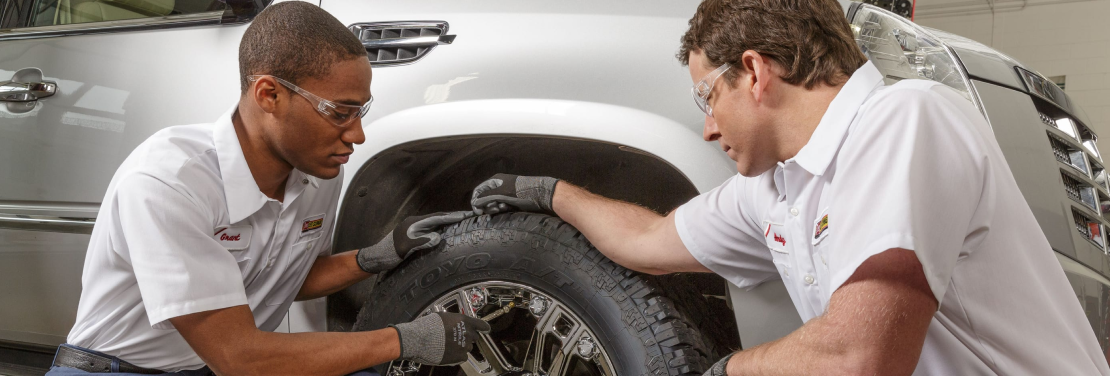Tire Service: Recognizing Tire Stress Monitoring Equipments
Recognizing Tire Pressure Surveillance Systems (TPMS) is a crucial facet of preserving ideal automobile performance and security on the roadway. With advancements in automotive technology, TPMS has ended up being a common attribute in modern-day vehicles, providing real-time information on tire pressure levels.

Relevance of TPMS
The importance of Tire Stress Tracking Systems (TPMS) depends on their ability to enhance car safety and efficiency via real-time surveillance of tire pressure levels. Preserving the right tire pressure is crucial for guaranteeing optimum handling, stopping, and overall safety of a lorry. TPMS supplies motorists with immediate feedback on any kind of overinflated or underinflated tires, permitting timely changes to be made.
Parts of TPMS
Making up various necessary elements, a Tire Stress Monitoring System (TPMS) works as an advanced safety and security function in modern-day cars. The main parts of a TPMS include sensors, a control component, and a warning indicator. Sensors are typically situated in the tire shutoff stem or connected to the wheel assembly, where they measure tire stress and transfer data to the control component. The control module processes this details and activates a warning if it detects substantially low pressure in any of the tires. The warning indicator, frequently a sign on the control panel, signals the driver to inspect the afflicted tire or tires. Some progressed TPMS versions also display the actual tire pressure analyses for each and every tire, giving drivers with real-time information to guarantee ideal tire efficiency and safety and security. By keeping track of tire pressure continuously, TPMS helps protect against accidents, minimizes tire wear, and boosts gas efficiency, making it a vital element for lorry safety and security and performance.
Kinds of TPMS

On the other hand, indirect TPMS relies upon the lorry's wheel speed sensing units to keep an eye on tire stress. This system detects underinflation by comparing the rotational rates of the wheels. Indirect TPMS is less pricey than straight TPMS, as it utilizes existing sensors within the vehicle.
While direct TPMS offers much more precise readings, indirect TPMS is easier in style and commonly calls for much less upkeep. Both systems have their advantages and limitations, and the Continued choice between them typically depends upon variables such as price, lorry make, and individual choice. Recognizing the distinctions between these two types of TPMS can assist car owners make informed choices pertaining to tire upkeep and safety and security.
TPMS Upkeep Tips
Reliable upkeep of TPMS is necessary for making sure ideal performance and safety and security of your lorry. Routinely evaluating the TPMS sensing units for any type of damage or deterioration is vital. Make sure that the sensors are clean and free from debris that can conflict with their functioning. Furthermore, it is recommended to inspect the sensing unit batteries regularly and replace them as needed to ensure precise analyses. Conduct routine checks on the tire stress levels and contrast them with the TPMS readings to guarantee they are consistent. If there are any type of disparities, rectify the system complying with the manufacturer's guidelines. Furthermore, during tire turning or replacement, make certain that the TPMS elements are managed thoroughly to stop any type of potential damage. If the TPMS advising light illuminates on the control panel, attend to the issue immediately by checking the tire stress and the total system for any kind of faults. By sticking to these upkeep suggestions, you can prolong the life expectancy of your TPMS and enhance the security of your visit driving experience.
Benefits of Correct Tire Stress
Keeping appropriate tire stress, as emphasized in TPMS Upkeep Tips, is essential for enjoying the numerous advantages connected with ideal tire pressure degrees. Furthermore, correct tire pressure makes sure also tire wear, extending the life-span of the tires and promoting more secure driving problems. In conclusion, the benefits of appropriate tire pressure go past simply tire long life; they encompass enhanced gas performance, improved safety and security, better car efficiency, and total driving comfort.
Final Thought
To conclude, comprehending tire pressure monitoring systems (TPMS) is vital for keeping optimal tire stress and guaranteeing car safety and security. By recognizing the importance of TPMS, being familiar with its elements, knowing the different kinds readily available, sticking to correct upkeep tips, and realizing the advantages of keeping correct tire pressure, motorists can improve their driving experience and extend the life expectancy of their tires. Appropriate tire pressure is key to effective and safe vehicle procedure.
